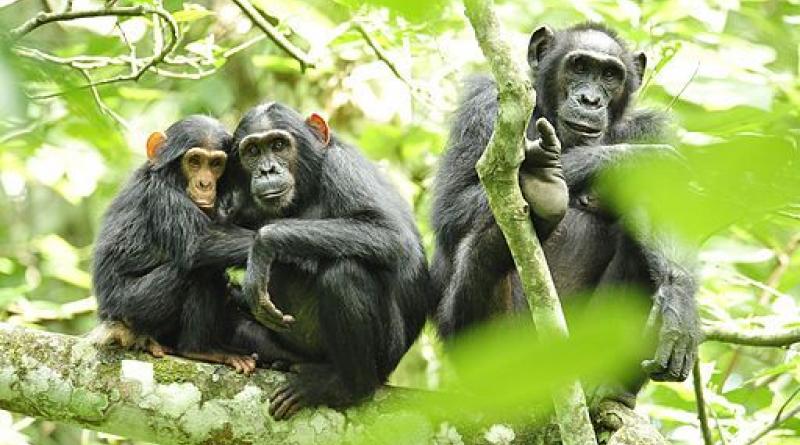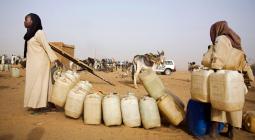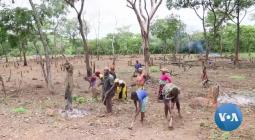This Month in Climate Science: Primate Extinctions; Ice-free Greenland; A Dengue Explosion.

Every month, climate scientists make new discoveries that advance our understanding of climate change's causes and impacts. The research gives a clearer picture of the threats we already face and explores what's to come if we don't reduce emissions at a quicker pace.
Our blog series, This Month in Climate Science, offers a snapshot of the month's significant scientific literature, compiled from some of the leading peer-reviewed journals. This edition explores studies published in June 2019. (To get these updates delivered right to your inbox, sign up for our Hot Science newsletter.)
Before providing a summary of recent developments in the scientific literature, we felt compelled to take stock of some recent events around the globe. The past few months have brought alarming signs of a changing climate, many of which are in line with projections of a warming world:
- Carbon dioxide levels hit a record peak in May 2019, reaching 414.8 parts per million (ppm). This was 3.5 ppm higher than the previous year’s monthly average, and the second-highest annual rise on record.
- India experienced a heat wave, with temperatures reaching more than 120 degrees F.
- The United States experienced its wettest 12 months (June 2018-May 2019) on record. Relentless rains hit the U.S. Midwest, closing railways and highways and stalling barges.
- Panama experienced one of its worst droughts in history, forcing Panama Canal operators to restrict the amount of cargo ships can carry.
- The National Snow and Ice Data Center reported a large-scale melt event in mid-June which reached over 700,000 square kilometers (270,000 square miles), setting a record for such extensive surface melt so early in the season. The Arctic Ocean experienced high temperatures throughout June, as well as a pattern of atmospheric circulation that spurred ice loss.
- Satellite data confirmed that the ice arch spanning the Nares Strait between Greenland and Ellesmere Island, which typically breaks up in June or July, broke up in March 2019, months ahead of schedule.
- Drone surveys revealed extreme erosion on Arctic coastlines, with up to a meter lost each day. Sea ice melted and exposed the underlying permafrost, which is now being washed away by storms.
These impacts we’re already experiencing mirror those projected in recently released scientific studies:
Impacts to Ecosystems
- Climate change threatens primates: Scientists studied the vulnerability of the world’s 6,087 primate species and subspecies to cyclones and droughts, two types of extreme events expected to intensify or increase in number. They found that 16% are vulnerable to cyclones, especially in Madagascar, and 22% are vulnerable to drought, especially in Malaysia, North Borneo, Sumatra and West Africa. Almost two-thirds of the world’s primate species are already threatened with extinction from deforestation, exploitation, habitat fragmentation and other stressors; climate change will pose yet another threat. In another study, scientists found that 74% of Central and South American forest-dwelling primates could be exposed to up to 7 degrees C (12.6 degrees F) of warming, and 89% of primate ranges are likely to witness temperature increases of more than 3 degrees C (5.4 degrees F). Researchers said that without urgent emissions reductions, the world will see primate extinctions on an unprecedented scale.
- Permafrost thaws 70 years earlier than expected: Scientists found that permafrost in the Canadian High Arctic, a region of very cold permafrost, is thawing much more quickly than anticipated given rapidly warming temperatures. Recent observations of thaw already exceed models’ projections for 2090.
- Coral bleaching hurts fish diversity: Scientists found that the diversity of coral reef fish did not rebound 16 years after coral bleaching. Almost two-thirds of reefs are expected to experience annual heat stress-induced bleaching by mid-century.
- Ecosystems shift north: Using almost a half century of data on bird species’ movement in the North American Great Plains, researchers found that the northern ecosystem boundary moved almost 600 kilometers (373 miles) northward. The southernmost boundary moved more than 260 kilometers (162 miles) northward.
Other Impacts
- A dengue explosion: Scientists found that 2.25 billion more people will be at risk of dengue fever in 2080 compared with 2015, bringing the total risk to 60% of the world’s population. This is largely due to population growth in areas prone to dengue, but also because warming is making more areas suitable to the virus. For example, dengue risk is expected to extend to the southeastern United States, northern Argentina, inland Australia and higher altitudes in central Mexico. Higher levels of warming increase the risk significantly.
- Rice particularly sensitive to climate variability: Scientists found that other grains (finger millet, maize, pearl millet and sorghum) are more resilient than rice to temperature and rainfall variability in India. The results suggest that grain diversification can help minimize climate impacts in India, where rice is the main crop.
- Energy demand to rise significantly from future warming: Modelers suggest that given moderate warming, global energy demand is expected to grow 25% to 58%, on top of a 1.7-2.8 times increase from socioeconomic developments. Cooling demand and irrigation needs are expected to rise; heating demand is expected to decline given warmer cold seasons. The rise in energy demand is especially high in the tropics, China, Europe and southern regions of the United States.
- Links between climate and conflict: Scientists found that climate has already affected organized armed conflict, although other factors, such as development levels and state capabilities, are more influential. Experts said that climate change is likely to increase the risks of conflict in the future.
Extreme Events:
- More dangerous heat in African cities: Studying 150 large cities across 43 African countries, researchers found that the number of people exposed to dangerous heat conditions will be 20 to 52 times higher by the end of the century compared with today’s levels. Cities in Western and Central Africa are at greatest risk.
- First global assessment of marine heat waves: Scientists put together the first global assessment of marine heat waves, extended periods of very warm ocean temperatures. The frequency of marine heat wave days increased more than 50% over the last century. Such events can have profound impacts on marine species and ecosystems.
- Meeting Paris Agreement goals will save lives: A study focusing on 15 U.S. cities found that if warming is limited to 2 degrees C (3.6 degrees F), we could avoid between 70 and 1,980 annual heat-related deaths per city during future heat waves. If the 1.5 degrees C (2.7 degrees F) goal is met, the number of avoided deaths increases to 110 to 2,720 per city.
Ice
- Rapid loss of Himalayan glaciers: Researchers quantified changes in ice thickness across Himalayan glaciers for two time periods: 1970 to 2000, and 2000 to 2016. The rate of ice loss in the second period was twice that of the first period, revealing how fast glacier melt is speeding up.
- An ice-free Greenland: Scientists found that Greenland could contribute between 5 to 23 centimeters (0.16 to 0.75 feet) of sea level rise by the end of the century, and could be ice-free within a millennium if emissions continue unabated. Total melt of the ice sheet would cause 7.2 meters (23.6 feet) of sea level rise.
WORLD RESOURCES INSTITUTE




